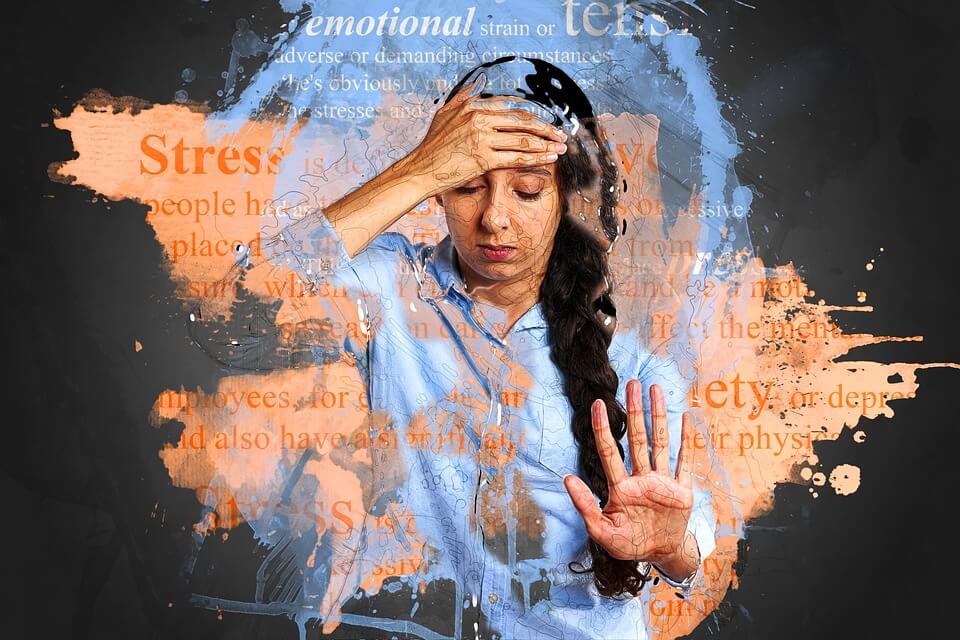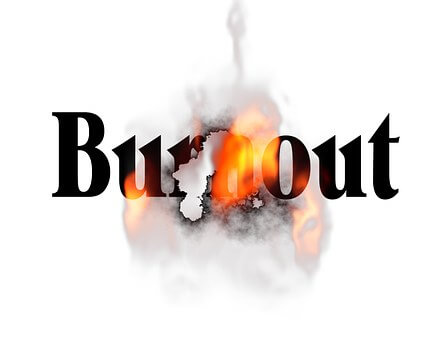Career Burn-out and Resiliency:
Between a Rock and a Hard Place

Rick Metrick, a Licensed Professional Counselor (LPC) has been in private practice for thirty years. For the past twenty years, he has served as founder and director of Total Life Counseling in Beckley, West Virginia. He has authored four books and is the pastor of a local church in his community. He and his wife Karen are the proud parents of five children and twelve grandchildren. You can visit his website at www.TLCWV.com.
Burn-out and Your Career
Constantly exhausted, Connie, a tenured public-school health nurse, had become cynical, complained of frequent headaches, exhaustion, impatience, and irritability. Everything was a burden, nothing brought pleasure and a pervasive sense of gloom and doom troubled her. She had no time for others and no time for herself. Her husband suggested she take a week off and go out of town. “I’m not sure the kind of tired I am can be fixed by a vacation,” was her reply.
“I’m not sure the kind of tired I am can be fixed by a vacation.” Harry Mitchell to Richardson in The Adjustment Bureau, 2011.
After two years, Alex, a mid-level supervisor, was frustrated about his inability to influence the direction of an important project. Yet, his work took up much of his evenings and weekends. No matter how long he slept he never felt rested. Every morning he dragged himself to work and every evening he dragged himself back home. His stomach was always upset, and he never knew when his bowels were going to “act up”. He had gained twenty pounds in less than three months, mostly due to fast food.
A recent study revealed that more than 70 percent of healthcare leaders have some degree of burnout1, and the same is true for many professions. Occupational burnout is a cluster of non-specific symptoms including “feelings of energy depletion or exhaustion; increased mental distance from one’s job, feelings of negativism or cynicism related to one’s job; and reduced professional efficacy” (International Classification of Diseases [ICD-11]). According to the World Health Organization (WHO) burn-out is an occupational phenomenon “resulting from chronic workspace stress that has not been successfully managed”.


A calm brain is a creative brain.
RICK METRICK
The most significant component of WHO’s definition of occupational burn-out is “stress that has not been well managed.” More often than not, the stress that accompanies burn-out is not from an external strain over which we have little to no limited control, but from a source within. Because is originates from an internal source, we are empowered with prospects of managing and changing our responses to stress stimuli. What follows are three resiliency tips that, with intentional effort, can help alleviate occupational burn-out.
Resiliency and Burn-out
Resiliency, advancing through adversity, takes more than passion, delegation, innovation or strong-will. It takes a mindful focus on no less than three domains of resiliency2.
Vision
Vision is what ambitious people do best, sort of. Professionally, they are great at seeing the finished product, identifying pitfalls along the way and adjusting midstream. However, many have no vision for their personal lives. You will be most positive and fulfilled when your life-vision includes clear goals, is being actively pursued and skillfully accomplished. This is what Martin Seligman might call “engagement” and “accomplishment,”3 or Mihaly Csikszentmihalyi means by “flow”4.
Resilient people advance through adversity because they accept that hard times are inevitable, determine to stay committed to the vision, trust their own judgment and expect pitfalls along the way. They do not catastrophize setbacks, personalize criticism or magnify obstacles. Remember, you are not a human doing, you are a human being. Priority number one must be the vision you have for your own character and conduct.
Composure
A calm brain is a creative brain. Stress hormones, such as adrenaline and cortisol, dampen the Smart Brain and foster impulsive thinking. An impulsive brain is a derailed brain, often irrational and hypervigilant, searching the environment for the next threat. Strongly motivated employees often compromise their personal life for their profession. This keeps them living on edge, trying to be everything for everyone and feeling their life is out of control.
Distress often results in interpretation bias. Interpretation bias magnifies negatives and disregards positives. Developing a non-anxious presence is essential because effective reasoning requires composure. This can be accomplished by broadening our EQ (emotional intelligence). EQ involves the awareness of our emotions and the ability to appropriately express them. Emotional Intelligence is the key to personal and professional development. Relaxation techniques, meditation, prayer, yoga all self-soothe and allow negative biases to be challenged and reappraised.
Collaboration
Maneuvering through the job market is enhanced for those who are effective networkers. Translating this skill into the personal arena minimizes occupational burn-out. “Woe to him that is alone when he falls, for he has no one to help him up” (Ecclesiastes 4:10a, NKJV). Investing in relationships helps us feel connected. Sharing our thoughts and feelings with trusted significant others and listening to their advice keeps us centered and in check. It is a wise person who realizes they were not meant to take life’s journey alone. Emotional connection, face-to-face personal interaction, and self-disclosure empties our emotional box, reduces stress and alters our perceptions.
Tips for Resiliency
Vision begins with the end in mind. Know what you want and who you want to be. Try to make decisions based more on vision and less on necessity or opportunity. Composure is a non-negotiable. Learn to relax by exploring yoga, meditation, breathing and relaxation techniques. Finally, collaborate with others, reach out to coworkers and consider entering into therapy.
I’ve been told that the custom of leaving tips for servers can be traced back to mid 17th century England and that the word is an acronym for “To Insure Prompt Service.” These three tips—vision, composure, and collaboration—synergize to insure prompt service in the prevention of and recovery from occupational stress.
1 Medical Group Management Association, June 2018
2 see www.hellodriven.com for more information
3 Martin Seligman, the leading authority in the fields of Positive Psychology and resilience, employs a theoretical model for the well-lived life which he refers to with the acronym PERMA.
4 Csikszentmihalyi, a Hungarian-American psychologist, developed “flow” to refer to a highly focused and productive mental state leading to a sense of personal well-being.

CAREER ADVICE

GOV TALK
